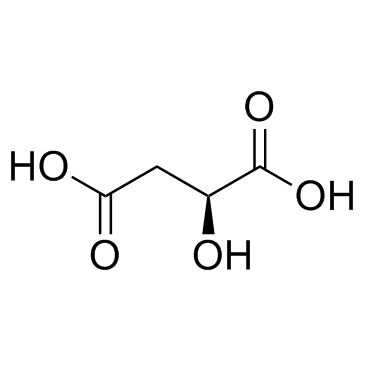Proteases
Proteases is a general term for a class of enzymes that hydrolyze protein peptide chains. According to the way they degrade polypeptides, they are divided into two categories: endopeptidases and telopeptidases. The former can cut the large molecular weight polypeptide chain from the middle to form prions and peptones with smaller molecular weights; the latter can be divided into carboxypeptidase and aminopeptidase, which respectively remove the peptide from the free carboxyl terminus or free amino terminus of the polypeptide one by one. Chain hydrolysis produces amino acids.
A general term for a class of enzymes that hydrolyze peptide bonds in proteins. According to the way they hydrolyze polypeptides, they can be divided into endopeptidases and exopeptidases. Endopeptidase cleaves the interior of the protein molecule to form smaller molecular weight peptones and peptones. Exopeptidase hydrolyzes peptide bonds one by one from the end of the free amino group or carboxyl group of protein molecules, and frees amino acids, the former is aminopeptidase and the latter is carboxypeptidase. Proteases can be classified into serine proteases, sulfhydryl proteases, metalloproteases and aspartic proteases according to their active centers and optimum pH. According to the optimum pH value of its reaction, it is divided into acidic protease, neutral protease and alkaline protease. The proteases used in industrial production are mainly endopeptidases.
Proteases are widely found in animal offal, plant stems and leaves, fruits and microorganisms. Microbial proteases are mainly produced by molds and bacteria, followed by yeast and actinomycetes.
Enzymes that catalyze the hydrolysis of proteins. There are many kinds, the important ones are pepsin, trypsin, cathepsin, papain and subtilisin. Proteases have strict selectivity for the reaction substrates they act on. A protease can only act on certain peptide bonds in protein molecules, such as the peptide bonds formed by the hydrolysis of basic amino acids catalyzed by trypsin. Proteases are widely distributed, mainly in the digestive tract of humans and animals, and are abundant in plants and microorganisms. Due to limited animal and plant resources, the industrial production of protease preparations is mainly prepared by fermentation of microorganisms such as Bacillus subtilis and Aspergillus terrestris.
Targets for Proteases
- Caspase(114)
- Aminopeptidase(24)
- ACE(74)
- Calpains(20)
- Carboxypeptidase(10)
- Cathepsin(81)
- DPP-4(31)
- Elastase(26)
- Gamma Secretase(67)
- HCV Protease(59)
- HSP(113)
- HIV Integrase(37)
- HIV Protease(47)
- MMP(228)
- NS3/4a protease(8)
- Serine Protease(18)
- Thrombin(58)
- Urokinase(4)
- Cysteine Protease(0)
- Other Proteases(18)
- Tyrosinases(47)
- 15-PGDH(1)
- Acetyl-CoA Carboxylase(13)
- Acyltransferase(59)
- Aldehyde Dehydrogenase (ALDH)(28)
- Aminoacyl-tRNA Synthetase(9)
- ATGL(1)
- Dipeptidyl Peptidase(56)
- Drug Metabolite(457)
- E1/E2/E3 Enzyme(90)
- Endogenous Metabolite(1636)
- FABP(30)
- Farnesyl Transferase(23)
- Glutaminase(14)
- Glutathione Peroxidase(14)
- Isocitrate Dehydrogenase (IDH)(28)
- Lactate Dehydrogenase(17)
- Lipoxygenase(234)
- Mitochondrial Metabolism(207)
- NEDD8-activating Enzyme(7)
- Neprilysin(12)
- PAI-1(13)
- Ser/Thr Protease(41)
- Tryptophan Hydroxylase(13)
- Xanthine Oxidase(18)
- MALT1(10)
- PCSK9(1)
Products for Proteases
- Cat.No. Nombre del producto Información
-
GC11282
β-Estradiol
Hormona sexual
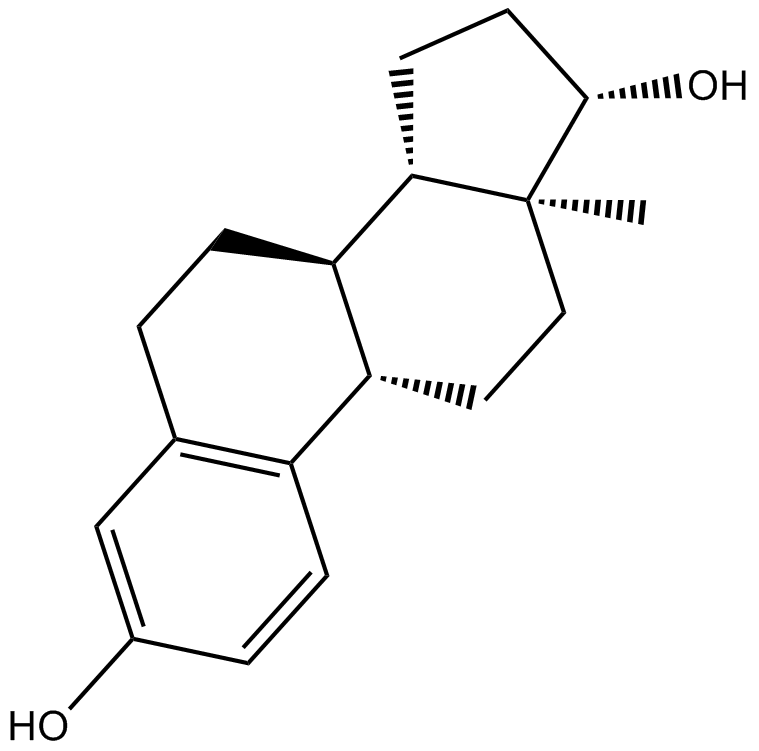
-
GC41183
α-Carotene
α-El caroteno, precursor de la vitamina A, se utiliza como agente antimetastÁsico o como adyuvante de fÁrmacos contra el cÁncer. α-El caroteno se aÍsla de vegetales de color amarillo-naranja y verde oscuro.

-
GC45208
α-hydroxy Metoprolol
α-hydroxy Metoprolol is an active metabolite of the β1-adrenergic receptor blocker metoprolol.

-
GC48948
α-Ketoglutaric Acid (sodium salt)
α-El Ácido cetoglutÁrico (sal de sodio) (Ácido alfa-cetoglutÁrico sÓdico) es un intermediario en la producciÓn de ATP o GTP en el ciclo de Krebs.

-
GC40718
α-Muricholic Acid
α-El Ácido muricÓlico es el Ácido biliar primario mÁs abundante en roedores.

-
GC40480
α-Phenyl-α-(2-pyridyl)acetonitrile
α-Phenyl-α-(2-pyridyl)thioacetamide, also known as antigastrin and SC-15396, is an inhibitor of gastric acid secretion.

-
GC38287
α-Pyridone
α-La piridona es un metabolito endógeno.
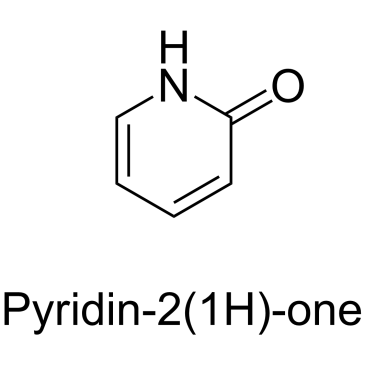
-
GC38000
β-Boswellic acid
β-El ácido boswélico se aísla de la resina de goma del serrado de Boswellia. β-El ácido boswélico es un inhibidor de tipo no reductor de la formación del producto 5-lipoxigenasa (5-LO) que interactúa directamente con la 5-LO o bloquea su translocación . β-El ácido boswélico inhibe la síntesis de ADN, ARN y proteína en células de leucemia humana HL-60.
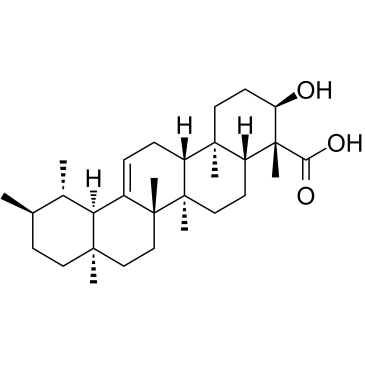
-
GC63275
β-Cryptoxanthin
β-Criptoxantina ((3R)-&2#946;-Criptoxantina), aislada de la mandarina Satsuma, es un carotenoide oxigenado y un potente antioxidante.
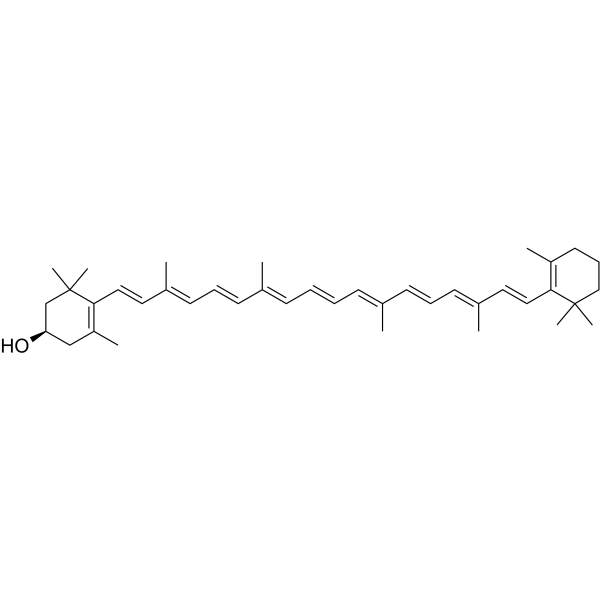
-
GC40777
β-D-Glucose
D-Glucose, a naturally occurring monosaccharide found in plants, is the primary energy source for living organisms.

-
GC66842
β-Methylcrotonyl coenzyme A lithium
β-Metilcrotonil coenzima A litio es un intermediario en el metabolismo de la leucina y se puede utilizar como sustrato para estudiar la especificidad y la cinética de β-metilcrotonil coenzima A carboxilasa (MCCase).
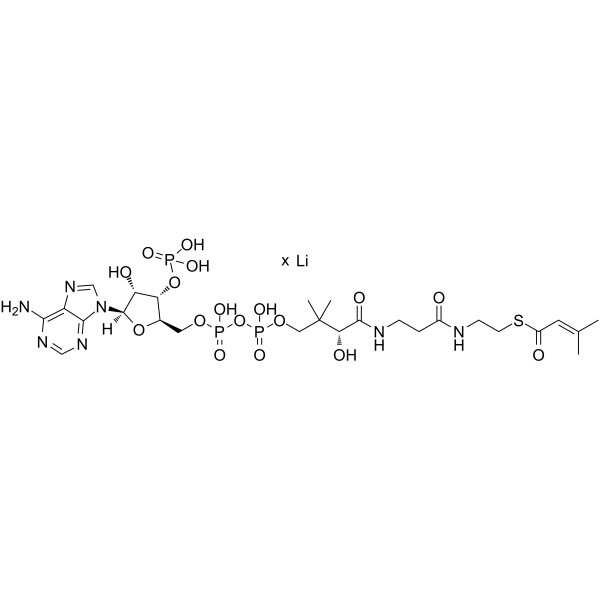
-
GC40719
β-Muricholic Acid
Un ácido biliar primario específico de ratones.

-
GC67484
β-Nicotinamide adenine dinucleotide reduced dipotassium
β-Nicotinamida adenina dinucleótido dipotásico reducido es una coenzima reducida activa por vía oral. β-Nicotinamida adenina dinucleótido dipotásico reducido es un donante de unidades de ADP-ribosa en reacciones de ADP-ribosilación y un precursor de ADP-ribosa cíclica. β-Nicotinamida adenina dinucleótido reducido dipotásico juega un papel como donante de electrones regenerativo en el metabolismo energético celular, incluyendo la glucólisis, β-oxidación y el ciclo del ácido tricarboxílico (TCA).
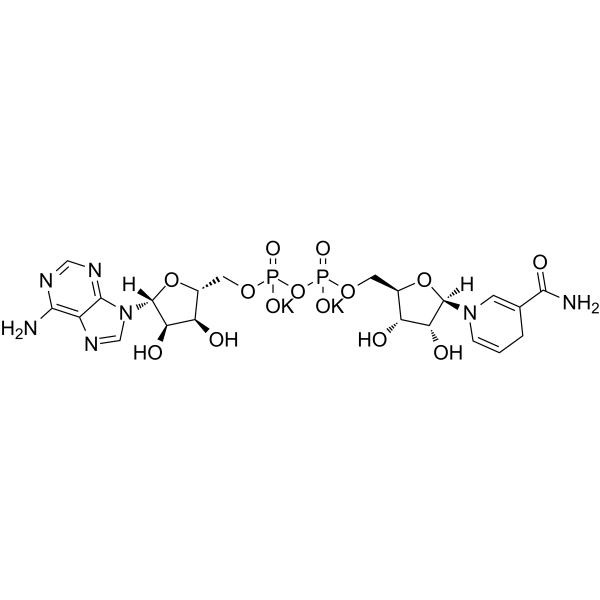
-
GC70185
β-Sitostenone
β-Sitostenone es un esterol aislado de Cochlospermum vitifolium. Puede inhibir la actividad de la tirosinasa y tiene propiedades anti-melanogénicas y antitumorales.

-
GC38010
γ-Aminobutyric acid
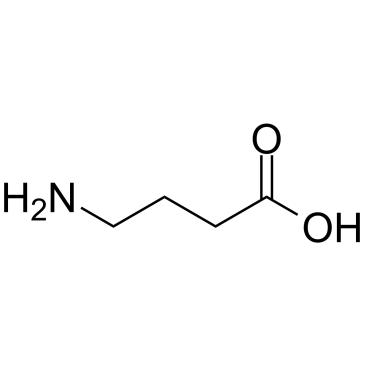
-
GC63279
γ-Glu-Gly TFA
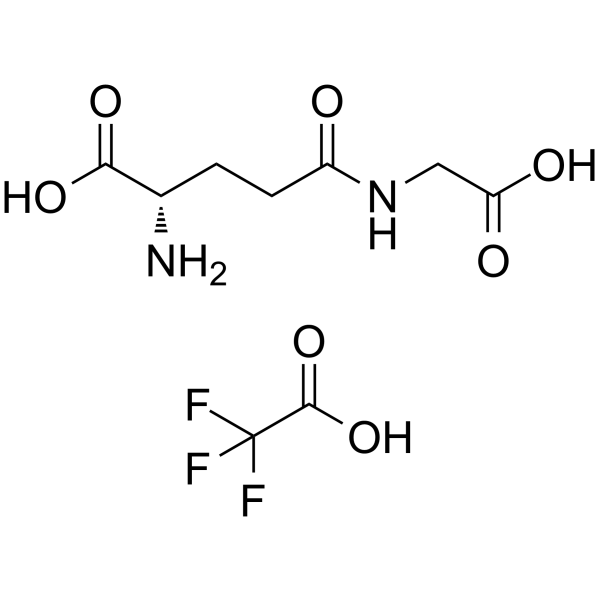
-
GC38011
γ-Secretase modulator 4
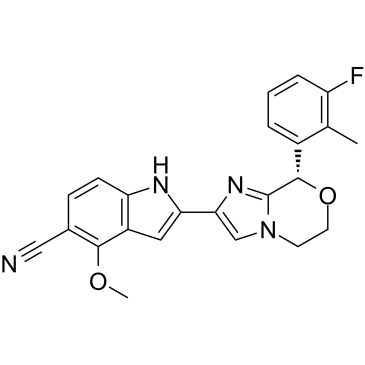
-
GC66048
δ-Secretase inhibitor 11
δ-El inhibidor de secretasa 11 (compuesto 11) es un inhibidor de secretasa oralmente activo, potente, penetrado por BBB, no tÓxico, selectivo y especÍfico, con un IC50 de 0,7 μM. δ-El inhibidor de secretasa 11 interactÚa tanto con el sitio activo como con el sitio alostérico de δ-secretasa. δ-El inhibidor de secretasa 11 atenÚa la escisiÓn de tau y APP (proteÍna precursora de amiloide). δ-El inhibidor de secretasa 11 mejora la disfunciÓn sinÁptica y los deterioros cognitivos en modelos de ratones transgénicos tau P301S y 5XFAD. δ-El inhibidor de secretasa 11 puede usarse para la investigaciÓn de la enfermedad de Alzheimer's.
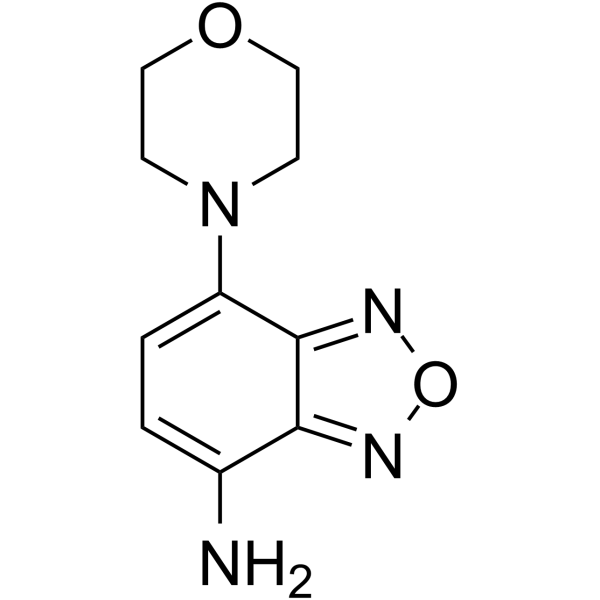
-
GC15975
α-Estradiol
α-El estradiol es un estrÓgeno débil y un 5&7#945;-inhibidor de la reductasa que se usa como medicamento tÓpico en el tratamiento de la alopecia androgénica.
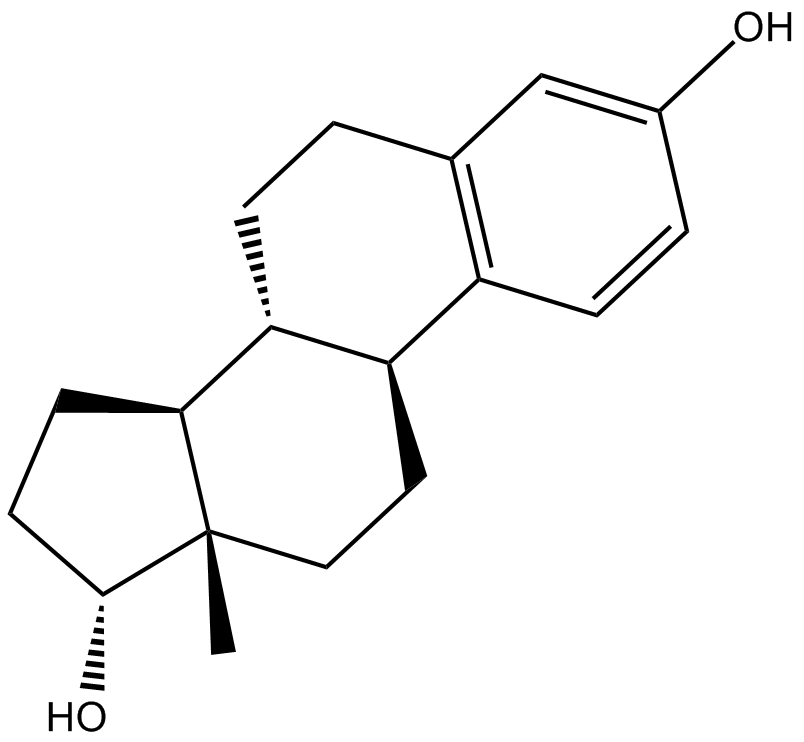
-
GC30187
γ-Glu-Phe (γ-Glutamylphenylalanine)
γ-Glu-Phe (γ-Glutamilfenilalanina) (γ-Glutamilfenilalanina) es sintetizada por Bacillus amyloliquefaciens (GBA) y Aspergillus oryzae (GAO).
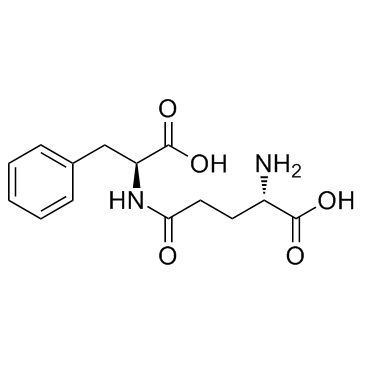
-
GC41552
ω-3 Arachidonic Acid
ω-3 Arachidonic acid is a rare PUFA found in trace amounts in dietary sources.

-
GC40259
(±)-β-Tocopherol
(±)-β-Tocopherol is a lipid-soluble form of vitamin E with antioxidant activity.

-
GC40260
(±)-γ-Tocopherol
(±)-γ-Tocopherol is a form of vitamin E with antioxidant and anti-inflammatory properties.

-
GC41661
(±)-4-hydroxy Propranolol β-D-Glucuronide
(±)-4-hydroxy Propranolol β-D-glucuronide is a metabolite of (±)-4-hydroxy propranolol, which is a metabolite of propranolol.

-
GC34961
(±)-BI-D
(±)-BI-D es un potente ALLINI (un inhibidor alostérico de IN) que se une a la integrasa en el sitio de unión de LEDGF/p75.
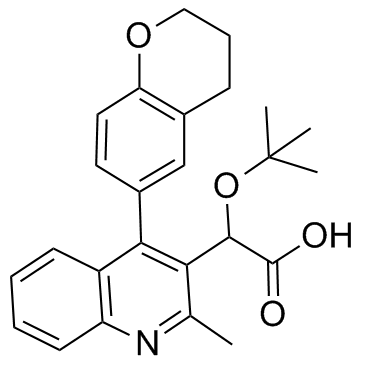
-
GC46284
(±)-Cotinine-d3
An internal standard for the quantification of cotinine

-
GC41670
(±)-Epinephrine (hydrochloride)
(±)-Epinephrine is a natural neurotransmitter that is released from the adrenal medulla and activates adrenoceptors (Kis = 15, 735, and 3,970 nM for α1A-, β2-, and β1-adrenergic receptors, respectively).

-
GC41671
(±)-Equol 4'-sulfate (sodium salt)
(±)-Equol 4'-sulfate is a gut-mediated phase II metabolite of the isoflavonoid phytoestrogen (±)-equol.

-
GC41315
(±)-Ketoprofen Glucuronide
(±)-Ketoprofen glucuronide is a phase II metabolite of the non-steroidal anti-inflammatory drug (NSAID) ketoprofen.

-
GC38369
(±)-Leucine

-
GC65599
(±)-Leucine-d10
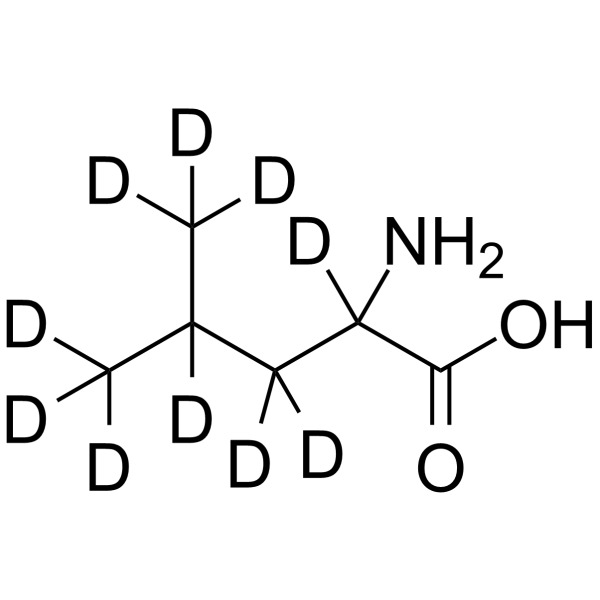
-
GC49875
(±)-N-desmethyl Venlafaxine (hydrochloride)
A minor active metabolite of venlafaxine

-
GC39271
(±)-Naringenin
(±)-naringenina es un flavonoide natural.
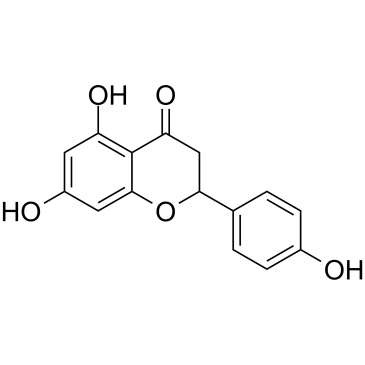
-
GC13890
(±)-Palmitoylcarnitine chloride
(±)-El cloruro de palmitoilcarnitina es un sustrato mitocondrial derivado de un ácido graso y reduce selectivamente la supervivencia celular en las células de cáncer colorrectal y de próstata al afectar las vías proinflamatorias, la entrada de Ca2+ y los efectos similares a los de la DHT.
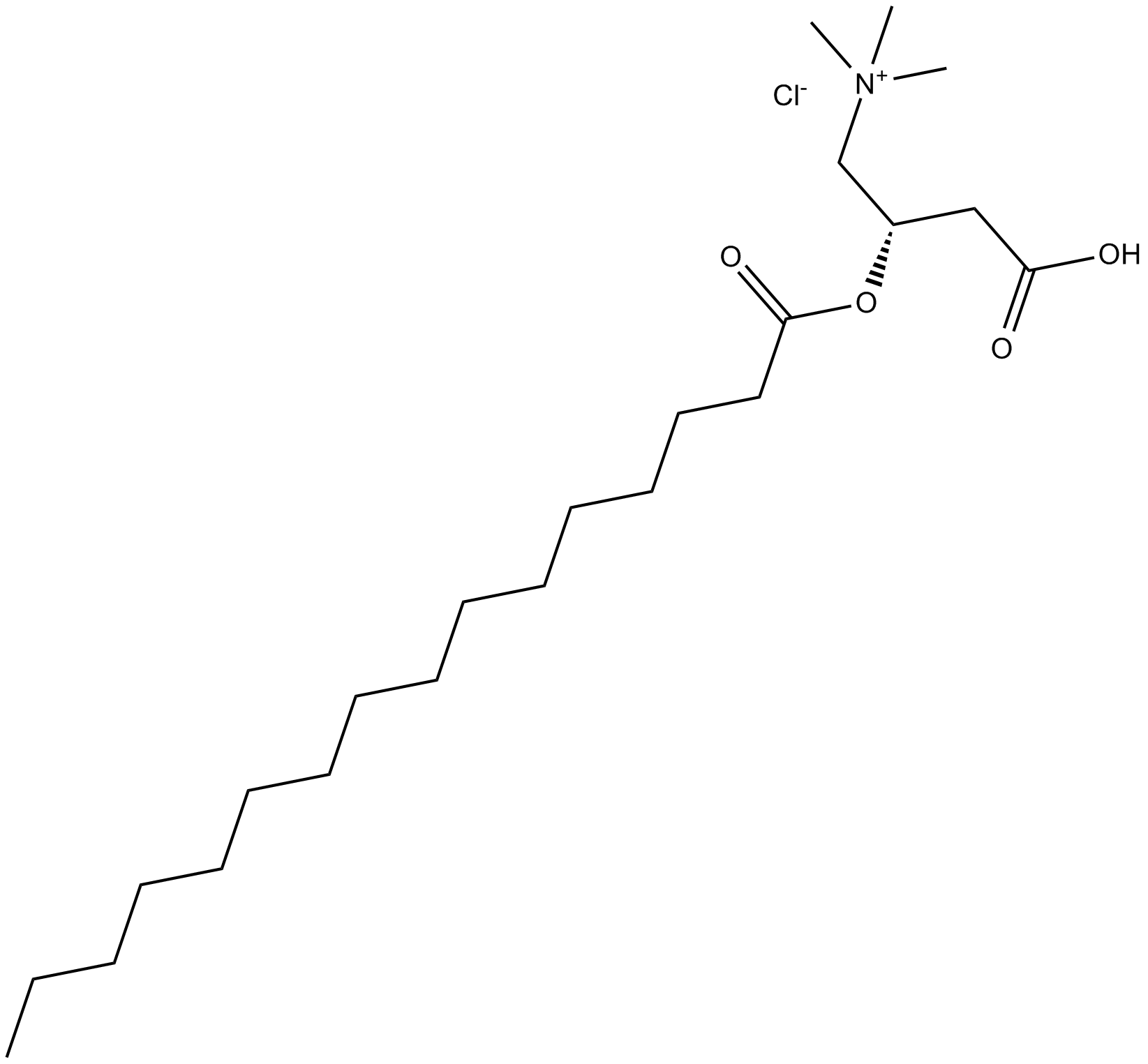
-
GC40229
(±)-Warfarin-d5
(±)-Warfarin-d5 is intended for use as an internal standard for the quantification of warfarin by GC- or LC-MS.

-
GC41649
(±)13-HODE cholesteryl ester
(±)13-HODE cholesteryl ester was originally extracted from atherosclerotic lesions and shown to be produced by Cu2+-catalyzed oxidation of LDL.
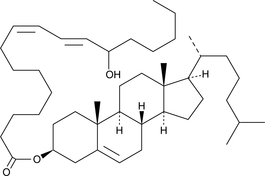
-
GC19444
(±)20-HDHA
(±)20-HDHA ((±)20-HDoHE) es una mezcla racémica y es un producto de autooxidación del ácido docosahexaenoico (DHA).

-
GC40828
(±)5-HETE lactone
(±)5-HETE lactone is a cyclic ester formed by acid-catalyzed nucleophilic addition of the C-5 hydroxyl to the C-1 carboxyl of (±)5-HETE.

-
GC40442
(±)8-HETE
(±)8-HETE es uno de los seis ácidos grasos monohidroxi producidos por la oxidación no enzimática del ácido araquidónico.

-
GC40801
(±)9(10)-DiHOME
(±)9(10)-DiHOME es el racemato de 9,10-DiHOME.

-
GC41666
(±)9-HODE cholesteryl ester
(±)9-HODE cholesteryl ester was originally extracted from atherosclerotic lesions and shown to be produced by Cu2+-catalyzed oxidation of LDL.
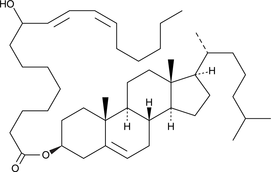
-
GC30586
(±) Anabasine
(±) Anabasine es un relajante muscular bifásico.
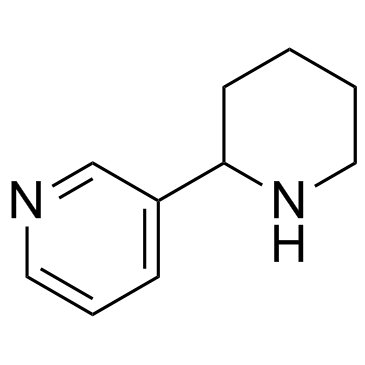
-
GC61647
(+)-Longifolene
(+)-Longifolene es un sesquiterpenoide y un metabolito en conejos.
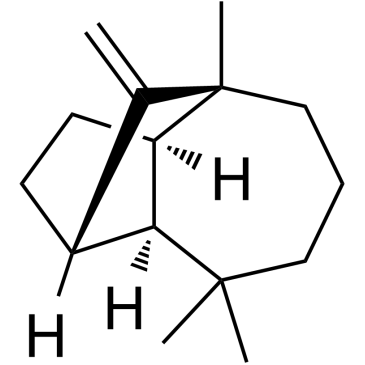
-
GC10675
(+,-)-Octopamine HCl
El clorhidrato de octopamina ((±)-p-octopamina), una monoamina biogénica relacionada estructuralmente con la noradrenalina, actÚa como neurohormona, neuromodulador y neurotransmisor en invertebrados.
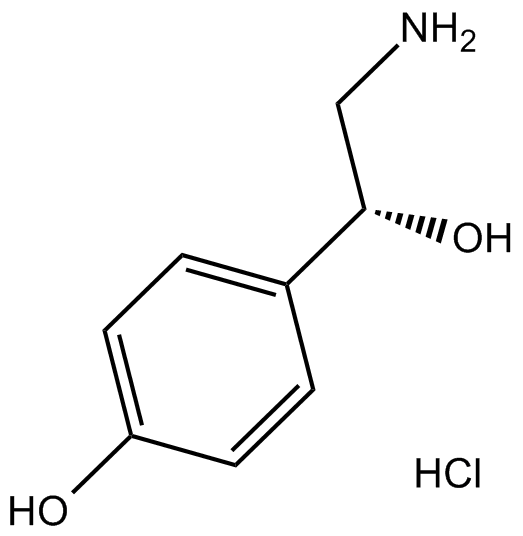
-
GC45245
(-)-Caryophyllene oxide
(-)-Óxido de cariofileno, aislado de Annona squamosa L.

-
GC17470
(-)-Cotinine
La (-)-cotinina ((-)-(-)-cotinina), un alcaloide del tabaco y uno de los principales metabolitos de la nicotina, se utiliza como indicador biológico para medir la composición del humo del tabaco.
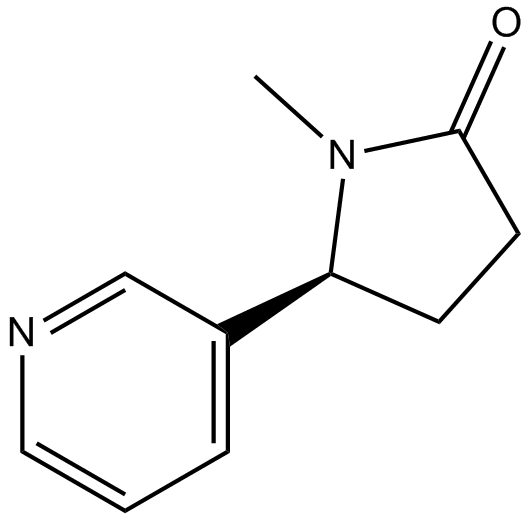
-
GC17242
(-)-epigallocatechin
(-)-Epigalocatequina (Epigalocatequina) es el flavonoide mÁs abundante en el té verde, puede unirse a polipéptidos nativos desplegados y prevenir la conversiÓn a fibrillas de amiloide.
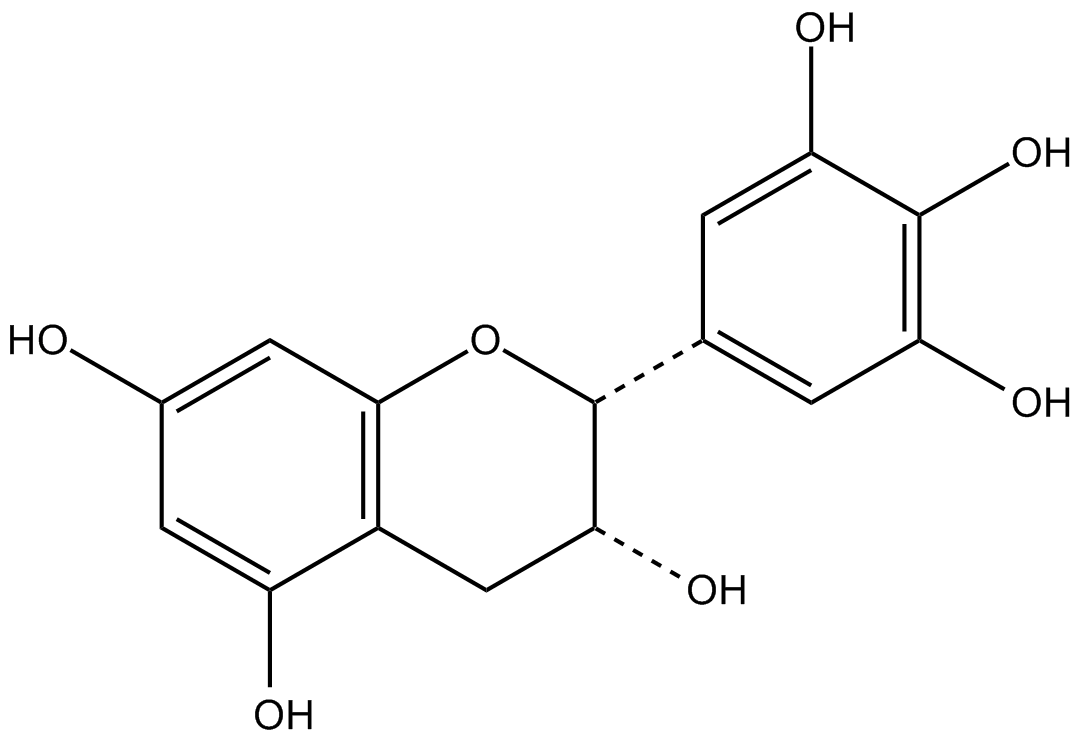
-
GC14049
(-)-Epigallocatechin gallate (EGCG)
Un fenol con diversas actividades biológicas.
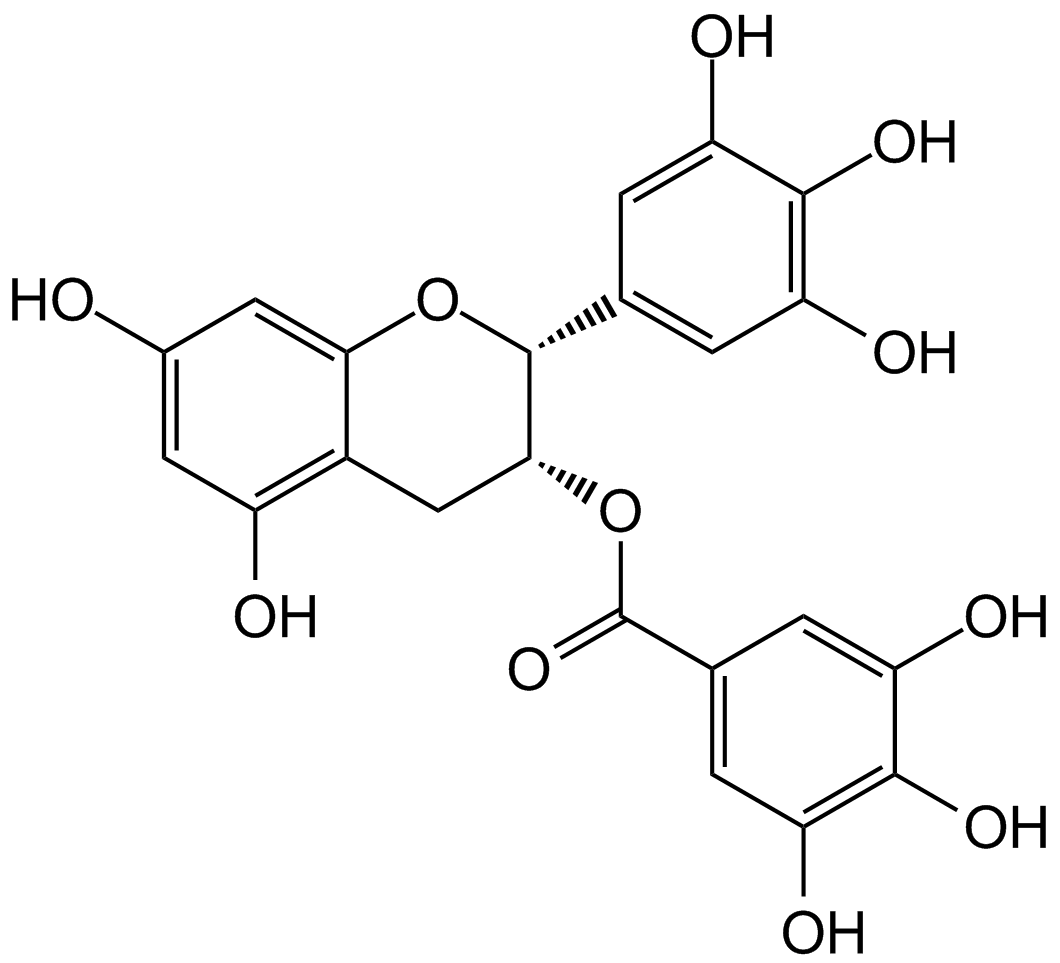
-
GC31620
(-)-Fucose (6-Desoxygalactose)
La (-)-fucosa (6-desoxigalactosa) se clasifica como miembro de las hexosas, juega un papel en la determinaciÓn de la subestructura del antÍgeno de los grupos sanguÍneos A y B, la adhesiÓn leucocito-endotelial mediada por selectina y las interacciones huésped-microbio.
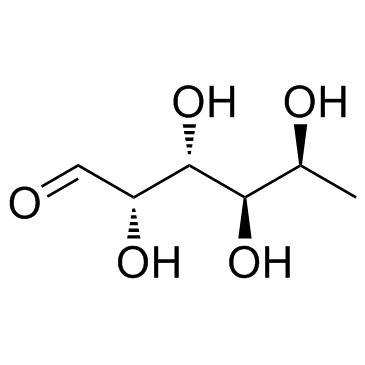
-
GC34951
(-)-Menthol
El (-)-mentol es un componente clave del aceite de menta que se une y activa el receptor potencial transitorio de melastatina 8 (TRPM8), un canal catiÓnico no selectivo permeable al Ca2+-, para aumentar el [Ca2+]i. Actividad antitumoral.

-
GC45252
(-)-Sitagliptin Carbamoyl Glucuronide
(-)-Sitagliptin carbamoyl glucuronide is a minor phase II metabolite of the dipeptidyl peptidase 4 (DPP-4) inhibitor (-)-sitagliptin.

-
GC18622
(2'S)-Nicotine-1-oxide
(2'S)-Nicotine-1-oxide is a metabolite of nicotine .
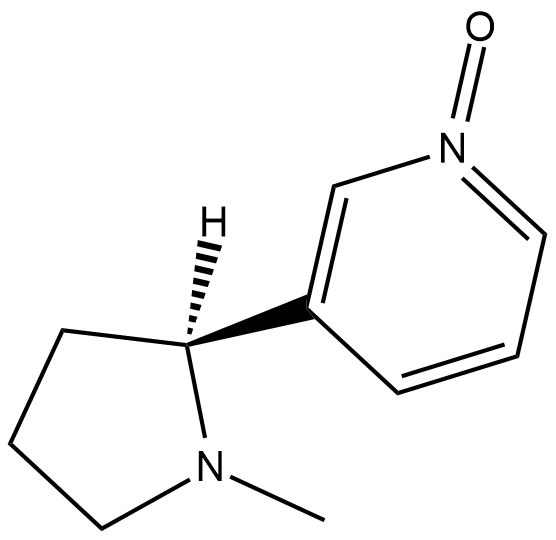
-
GC38299
(2-Aminoethyl)phosphonic acid
El Ácido (2-aminoetil)fosfÓnico es un metabolito endÓgeno.
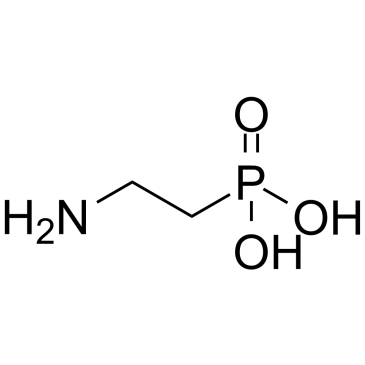
-
GC68509
(25R)-12α-Hydroxyspirost-4-en-3-one
(25R)-12α-Hidroxiespirost-4-en-3-ona es un metabolito secundario producido por la acción de Nocardia globerula sobre Hecogenina.
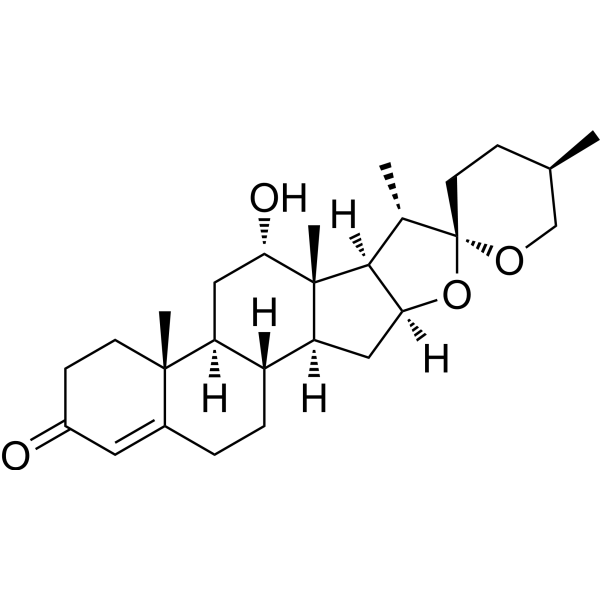
-
GC38265
(2R,3R)-2,3-Dihydroxysuccinic acid
El Ácido (2R,3R)-2,3-dihidroxisuccÍnico (Ácido L-(+)-tartÁrico) es un metabolito endÓgeno.

-
GC62731
(2R,3R)-Butane-2,3-diol
El (2R,3R)-butano-2,3-diol es un metabolito endÓgeno.

-
GC38296
(2S,3R,4S,5R)-2-Amino-3,4,5,6-tetrahydroxyhexanal hydrochloride
El clorhidrato de (2S,3R,4S,5R)-2-amino-3,4,5,6-tetrahidroxihexanal es un metabolito endÓgeno.

-
GC33797
(3-Carboxypropyl)trimethylammonium chloride
El cloruro de (3-carboxipropil)trimetilamonio es una sustancia angiopÁtica producida como metabolito intermediario por la microbiota intestinal que se alimenta de carnitina en la carne roja de la dieta.
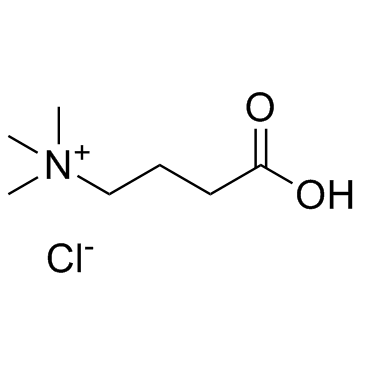
-
GC41694
(3S)-hydroxy Quinidine
(3S)-hydroxy Quinidine is an active quinidine metabolite.

-
GC38144
(3S,4R,5S)-1,3,4,5,6-Pentahydroxyhexan-2-one
A monosaccharide
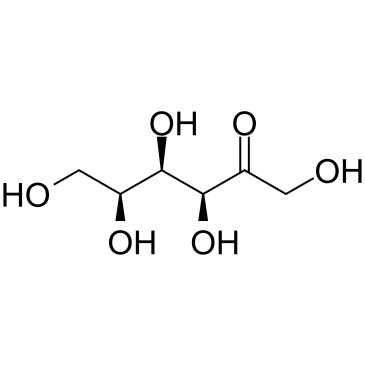
-
GC38283
(3S,4S,5R)-1,3,4,5,6-Pentahydroxyhexan-2-one
(3S,4S,5R)-1,3,4,5,6-Pentahidroxihexan-2-ona (D-(-)-Tagatose) es un monosacÁrido raro que se encuentra en la naturaleza con caracterÍsticas prebiÓticas.

-
GC12395
(D)-(+)-Neopterin
(D)-(+)-Neopterina (D-(+)-(D)-(+)-Neopterina), un producto catabÓlico del trifosfato de guanosina (GTM), sirve como marcador de la activaciÓn del sistema inmunitario celular.
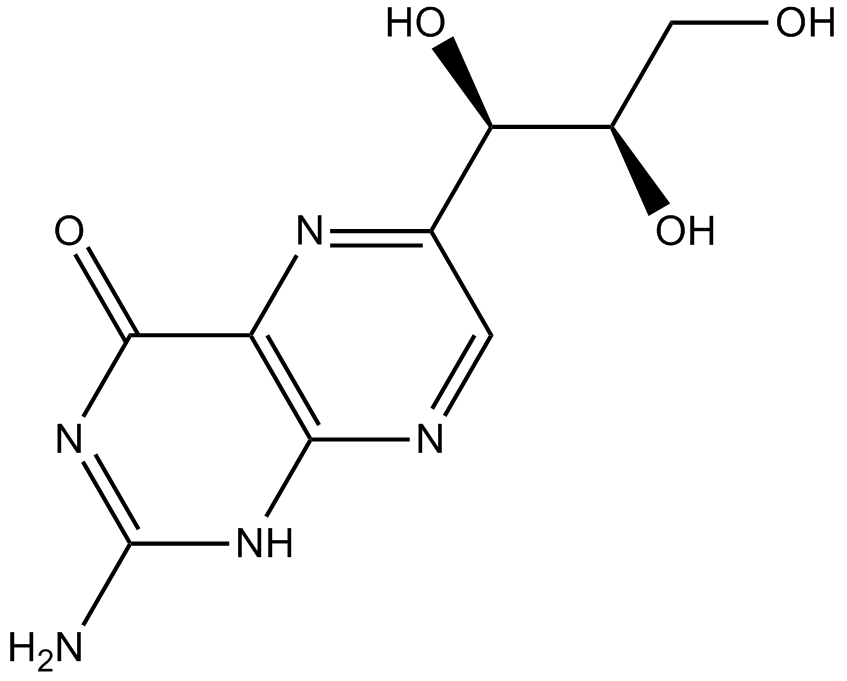
-
GC60399
(E)-10-Hydroxynortriptyline
La (E)-10-hidroxinortriptilina (E-10-OH-NT) es un metabolito de la nortriptilina.
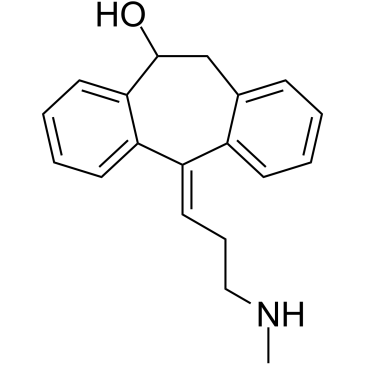
-
GC65239
(E)-3,4-(Methylenedioxy)cinnamic acid
El Ácido (E)-3,4-(metilendioxi)cinÁmico es un derivado del Ácido cinÁmico obtenido de la corteza del tallo de Brombya platynema.
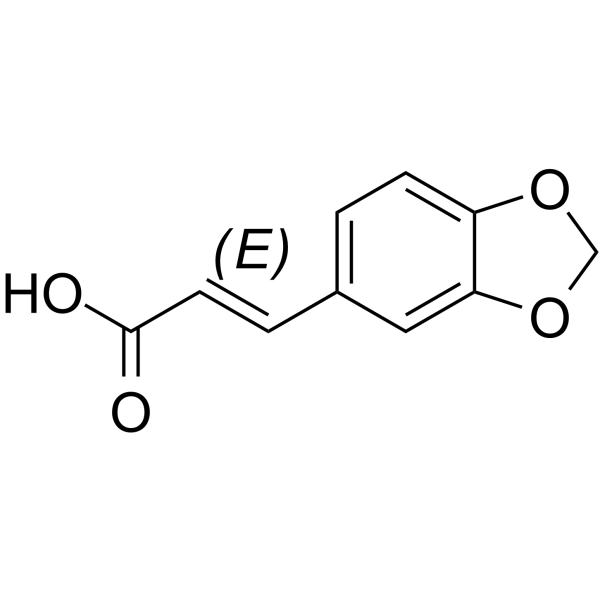
-
GC38684
(E)-m-Coumaric acid
El Ácido (E)-m-cumÁrico (Ácido 3-hidroxicinÁmico) es un Ácido aromÁtico muy abundante en los alimentos.
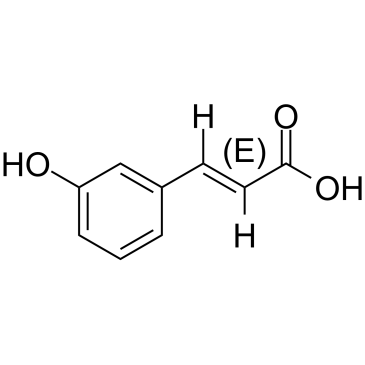
-
GC62734
(E)-Oct-2-enoic acid
El Ácido (E)-Oct-2-enoico es un metabolito endÓgeno.
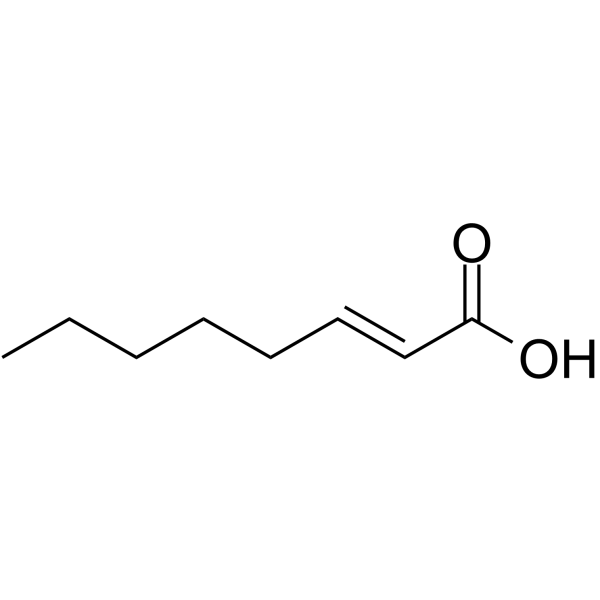
-
GC40286
(E,Z)-2-propyl-2-Pentenoic Acid
(E,Z)-2-propyl-2-Pentenoic acid is a bioactive metabolite of valproic acid that exhibits the same profile and potency of anticonvulsant activity in animal models as its parent compound without any observed teratogenicity and hepatotoxicity.

-
GC49189
(E/Z)-4-hydroxy Tamoxifen-d5
An internal standard for the quantification of (E/Z)-4-hydroxy tamoxifen

-
GC67476
(E/Z)-Sulindac sulfide
El sulfuro de (E/Z)-sulindac es un potente modulador de la secretasa (GSM). El sulfuro de (E/Z)-sulindaca reduce selectivamente la producción de Aβ42 a favor de Aβ más corto; especies. El sulfuro de (E/Z)-sulindac se puede utilizar para investigar la enfermedad de Alzheimer'.
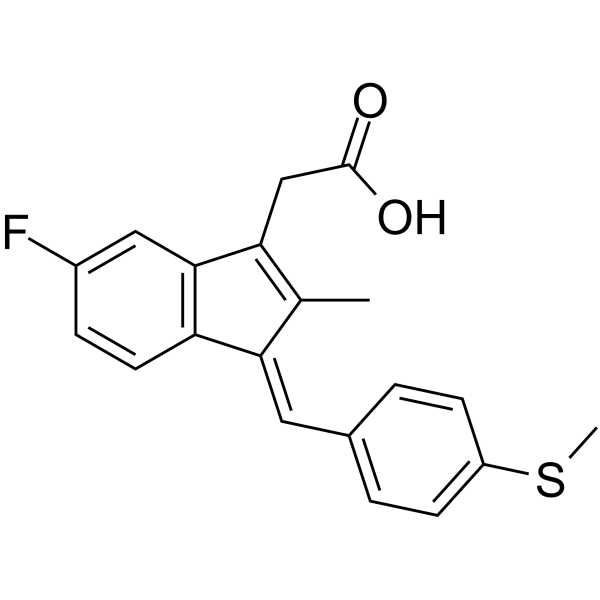
-
GC60404
(Ethoxymethyl)benzene
El (etoximetil)benceno es un metabolito endÓgeno.
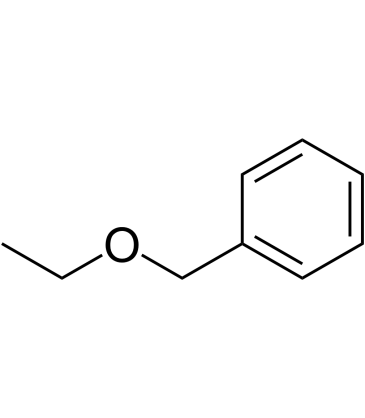
-
GA11210
(H-Cys-OH)2
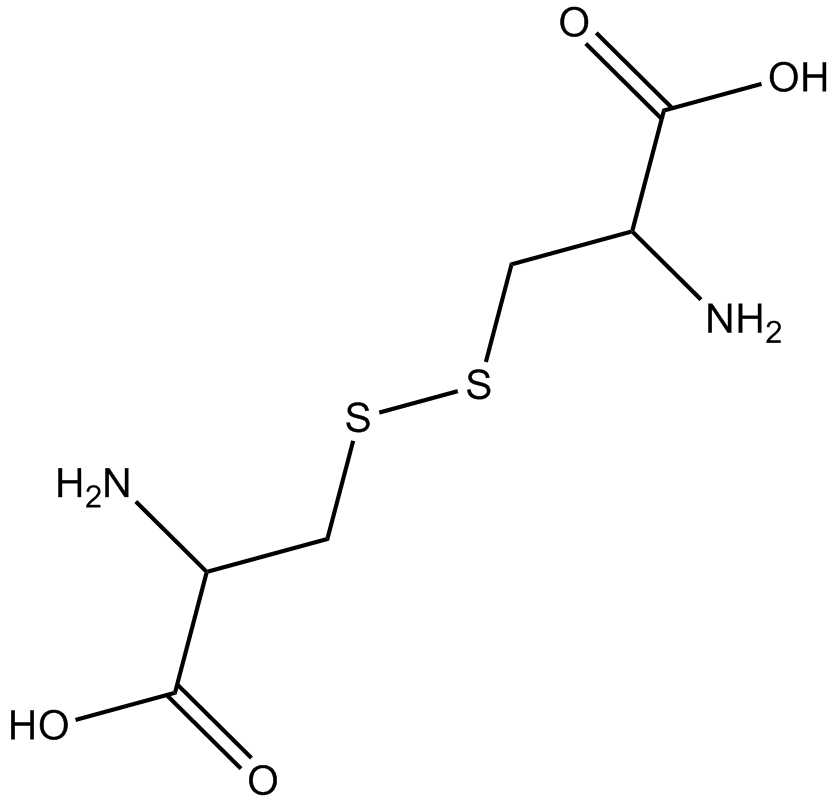
-
GN10783
(R) Ginsenoside Rh2
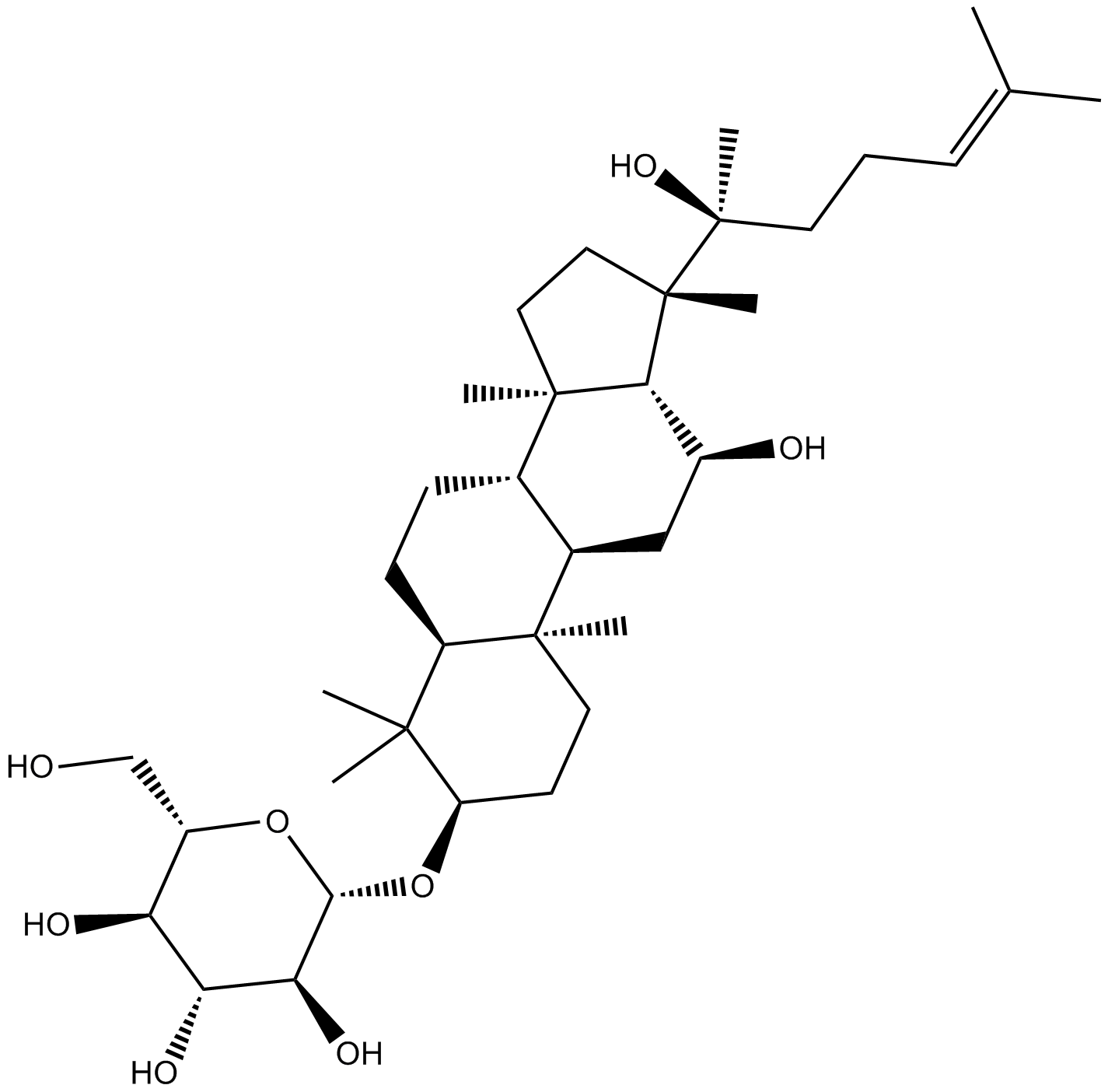
-
GC41721
(R)-α-Lipoic Acid
(R)-α-Lipoic acid is the naturally occurring enantiomer of lipoic acid, a cyclic disulfide antioxidant.

-
GC34442
(R)-(+)-Citronellal
(R)-(+)-Citronelal, aislado de los aceites de cÍtricos, lavanda y eucalipto, es un monoterpenoide y componente principal del aceite de citronelal con un distintivo aroma a limÓn.
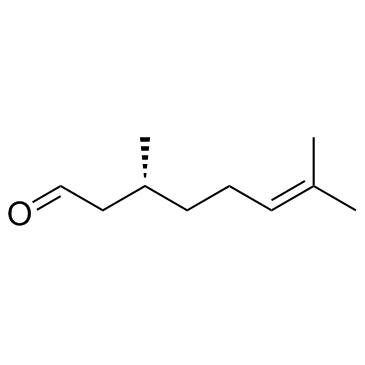
-
GC38262
(R)-(-)-1,3-Butanediol
El (R)-(-)-1,3-butanodiol se usa para regular el metabolismo de carbohidratos y lÍpidos.
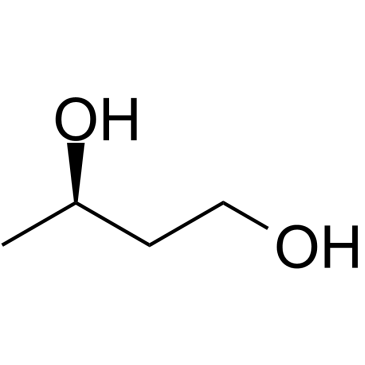
-
GC62737
(R)-(-)-O-Desmethyl Venlafaxine D6

-
GC30210
(R)-3-Hydroxybutanoic acid
El Ácido (R)-3-hidroxibutanoico es un metabolito y se convierte a partir de Ácido acetoacético catalizado por la 3-hidroxibutirato deshidrogenasa.
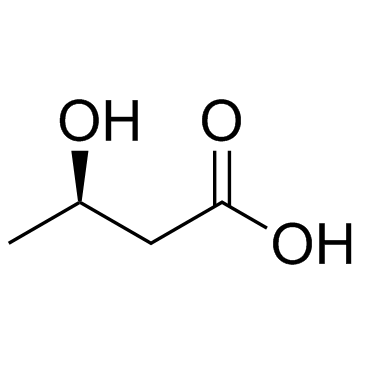
-
GC61759
(R)-3-Hydroxybutanoic acid sodium
El Ácido (R)-3-hidroxibutanoico sÓdico ((R)-3-Ácido hidroxibutÍrico) es un metabolito convertido a partir del Ácido acetoacético catalizado por la 3-hidroxibutirato deshidrogenasa.
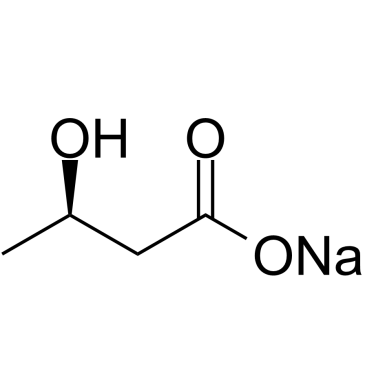
-
GC30661
(R)-3-Hydroxyisobutyric acid
El Ácido (R)-3-hidroxiisobutÍrico es un intermediario en las vÍas de la l-valina y la timina y desempeÑa un papel importante en el diagnÓstico de las muy raras enfermedades metabÓlicas hereditarias aciduria 3-hidroxiisobutÍrica y deficiencia de metilmalÓnico semialdehÍdo deshidrogenasa.
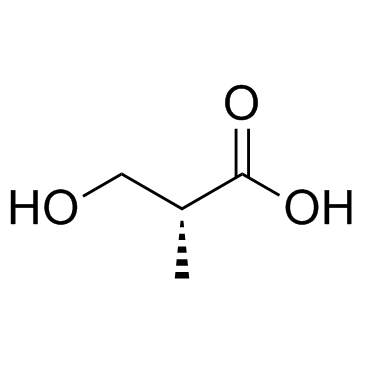
-
GC38282
(R)-5-Oxopyrrolidine-2-carboxylic acid
El Ácido (R)-5-oxopirrolidina-2-carboxÍlico es un metabolito endÓgeno.
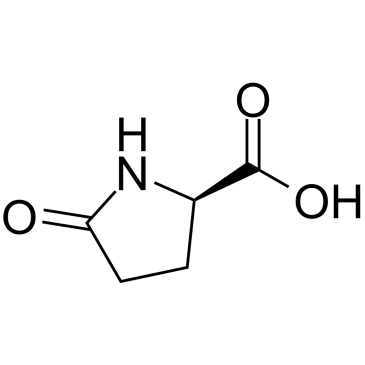
-
GC19012
(R)-GNE-140
(R)-GNE-140 es un potente inhibidor de la lactato deshidrogenasa A (LDHA), con IC50 de 3 nM y 5 nM para LDHA y LDHB, respectivamente; (R)-GNE-140 es 18 veces mÁs potente que el enantiÓmero S.
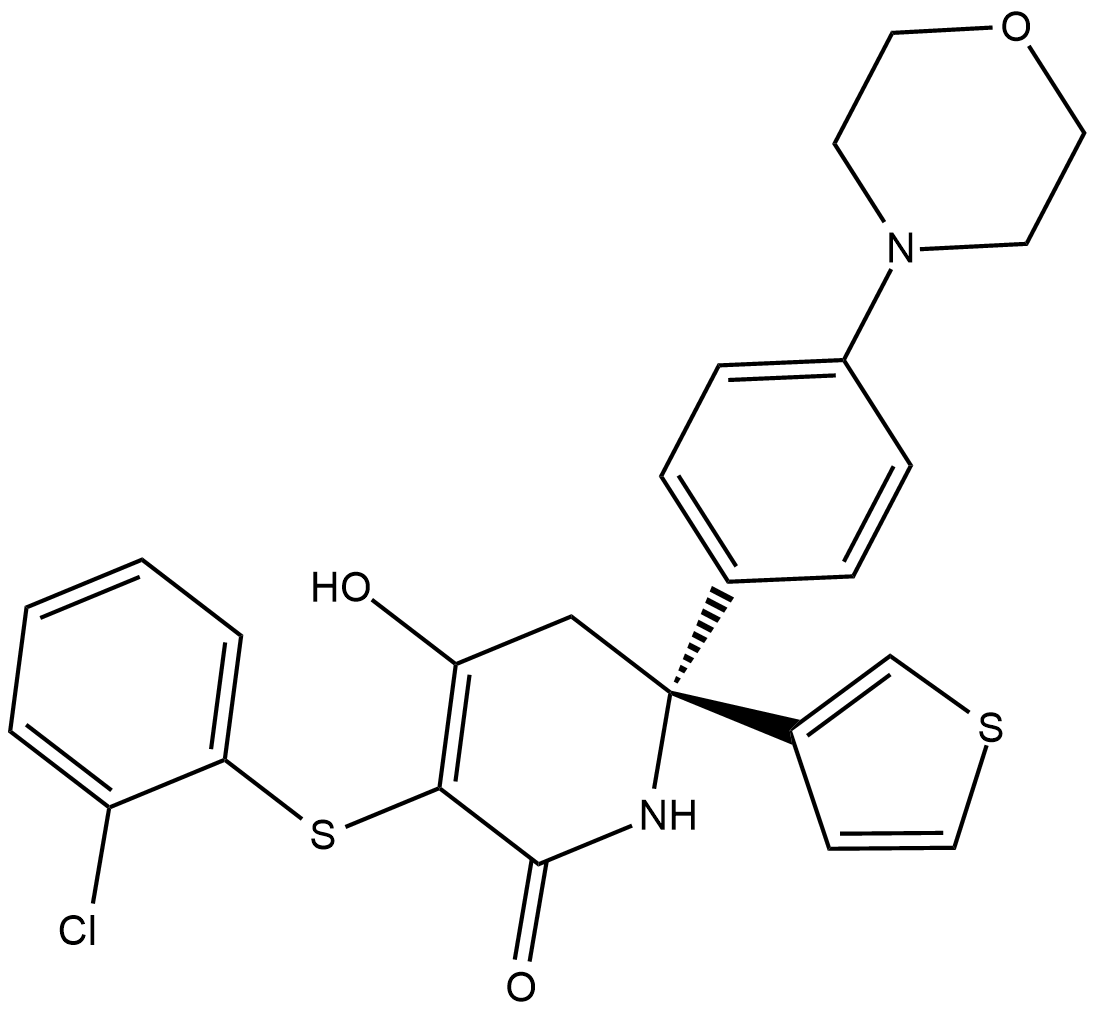
-
GC52290
(R)-HTS-3
An inhibitor of LPCAT3

-
GC61858
(R)-MLN-4760
(R)-MLN-4760, el enantiÓmero R de MLN-4760, es un inhibidor de ACE2, con una IC50 de 8,4 μM.

-
GC38364
(R)-Ornithine hydrochloride

-
GC38363
(R)-pyrrolidine-2-carboxylic acid
El Ácido (R)-pirrolidina-2-carboxÍlico es un metabolito endÓgeno.
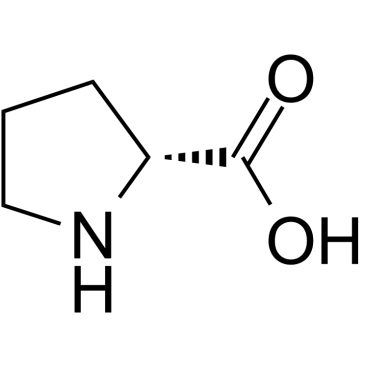
-
GC38720
(R)-Trolox
(R)-Trolox es un anÁlogo de la vitamina E y un inhibidor competitivo de la tirosinasa con un valor Ki de 0,83 mM y un valor ID50 de 1,88 mM. El (R)-Trolox tiene una mayor afinidad por la tirosinasa que el enantiÓmero (S) (valor Ki de 0,61 mM).
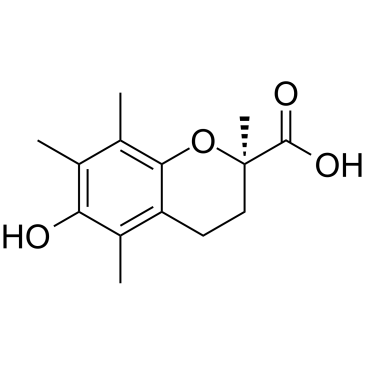
-
GC39832
(R,R)-(+)-Hydrobenzoin
(R,R)-(+)-La hidrobenzoÍna es un organocatalizador.
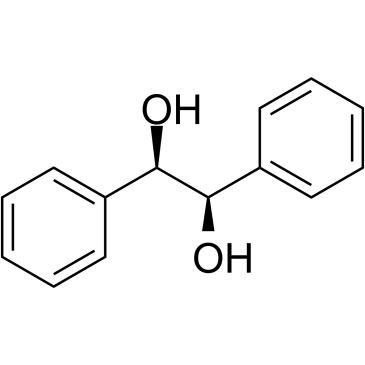
-
GC41722
(R,S)-Carvedilol Glucuronide
(R,S)-Carvedilol glucuronide is a racemic mixture of the carvedilol metabolites (R)-carvedilol glucuronide and (S)-carvedilol glucuronide.

-
GC34417
(R,S)-Ivosidenib ((R,S)-AG-120)
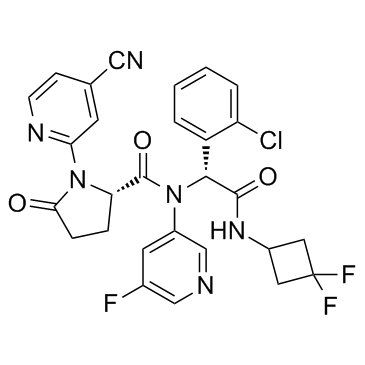
-
GC60410
(Rac)-3′-Hydroxy simvastatin
(Rac)-3′-Hydroxy simvastatin es un metabolito de Simvastatin.
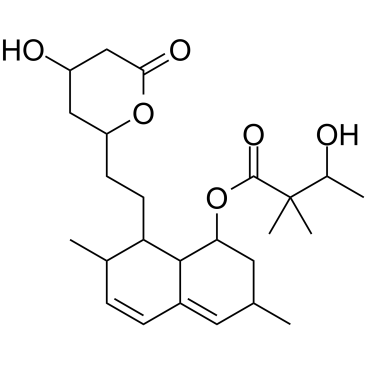
-
GC68414
(Rac)-Atropine-d3
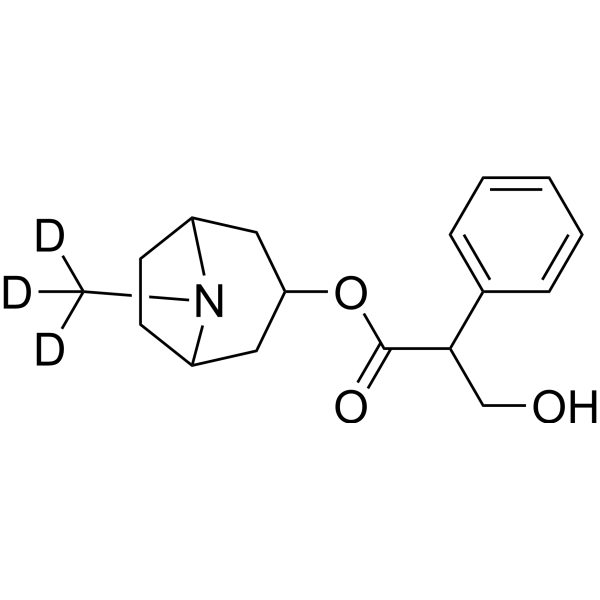
-
GC67993
(Rac)-Cotinine-d4
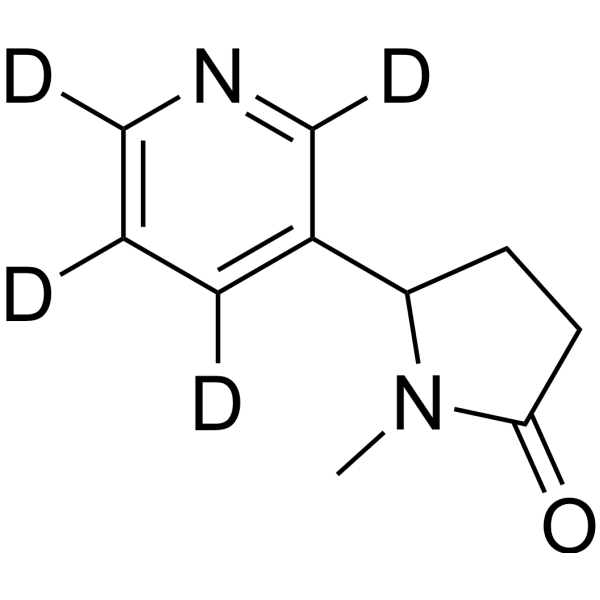
-
GC62744
(Rac)-OSMI-1
(Rac)-OSMI-1 es el racemato de OSMI-1.
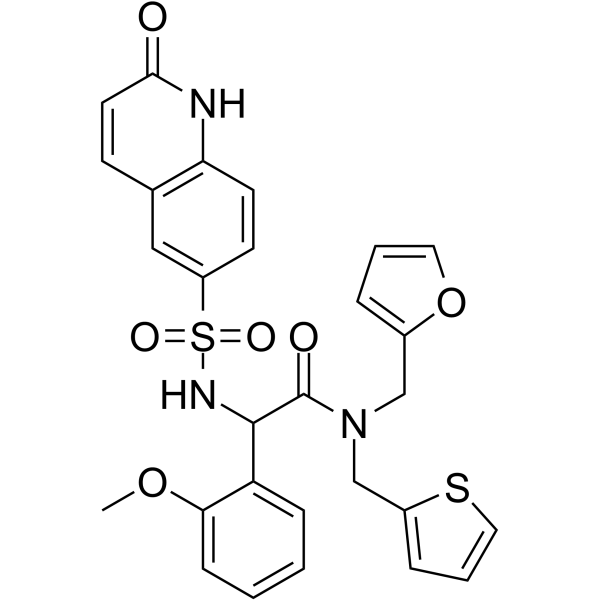
-
GC39833
(S)-(+)-1,2-Propanediol
El (S)-(+)-1,2-propanodiol es un metabolito endÓgeno.
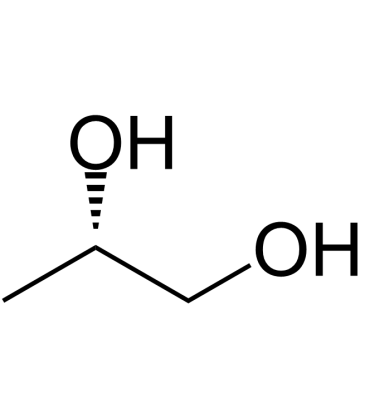
-
GC62747
(S)-(-)-Citronellal
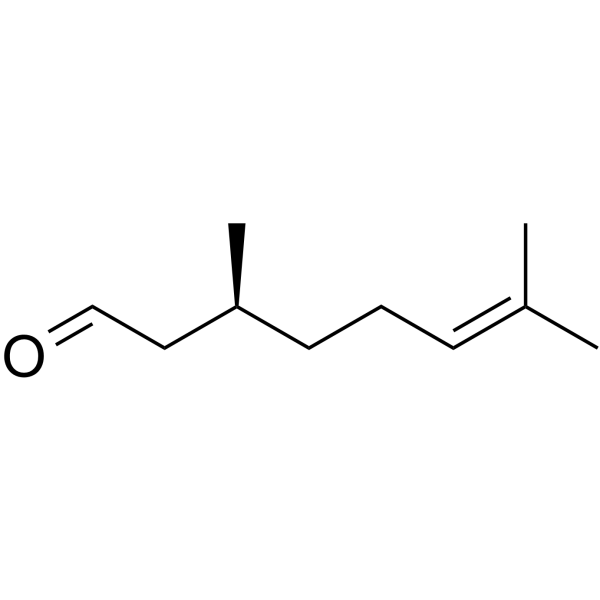
-
GC38371
(S)-(-)-Phenylethanol
El (S)-(-)-feniletanol es un metabolito endÓgeno.
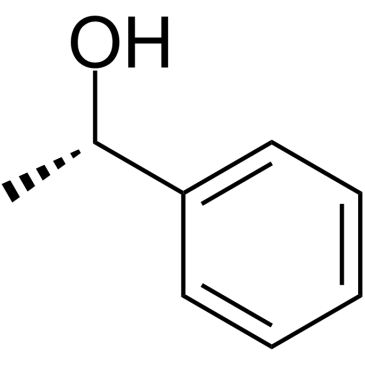
-
GC62748
(S)-2-Amino-3-(4-hydroxy-3,5-diiodophenyl)propanoic acid dihydrate
El Ácido (S)-2-amino-3-(4-hidroxi-3,5-diyodofenil)propanoico dihidrato es un metabolito endÓgeno.

-
GC31630
(S)-2-Hydroxy-3-phenylpropanoic acid
El Ácido (S)-2-hidroxi-3-fenilpropanoico es un producto del catabolismo de la fenilalanina.
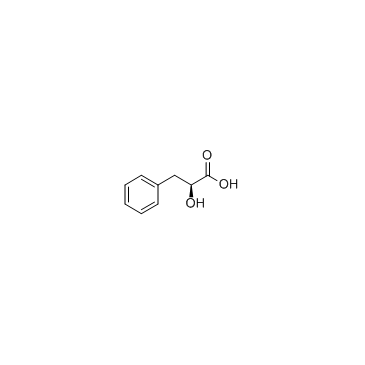
-
GC64746
(S)-2-Hydroxybutanoic acid
El Ácido (S)-2-hidroxibutanoico es el enantiÓmero S del Ácido 2-hidroxibutanoico.
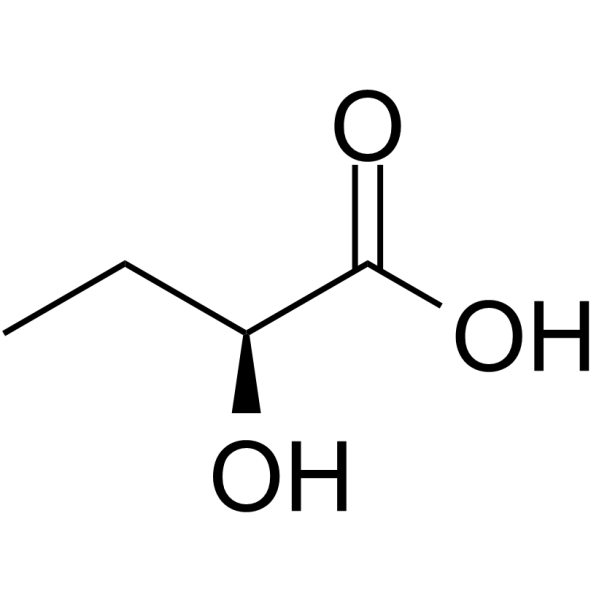
-
GC31622
(S)-2-Hydroxysuccinic acid
El Ácido (S)-2-hidroxisuccÍnico ((S)-2-Ácido hidroxisuccÍnico) es un Ácido dicarboxÍlico en forma natural, contribuye al agradable sabor agrio de las frutas y se utiliza como aditivo alimentario.
